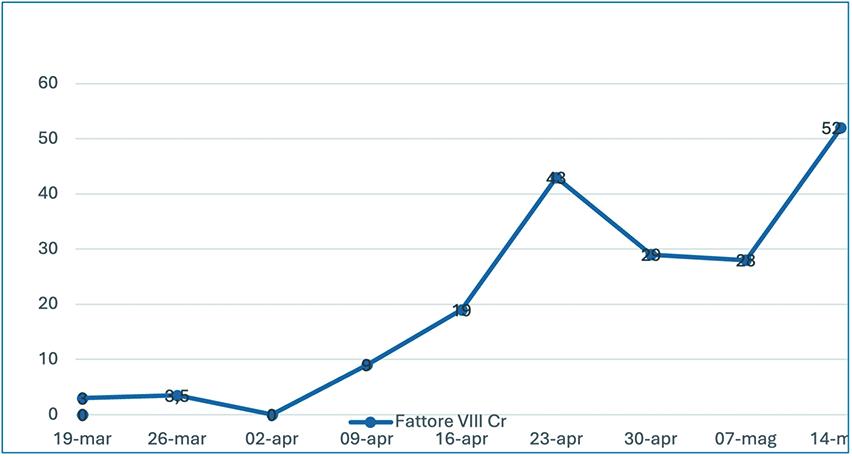29th National Conference of the Italian Society for the Study of Hemostasis and Thrombosis, 2025
Vol. 4 No. s1 (2025)
PO65 | Utilization of emicizumab in acquired hemophilia A: a case report
C. Caputo, P. Conca, I.L. Calcaterra, E. Cimino, M. Romeo, M. Aversano, E. Franco, C. De Luca, G. D’errico, L. Jr Valletta, M. Di Minno, A. Tufano | Department of Clinical Medicine and Surgery, Federico II University, Naples, Italy
Publisher's note
All claims expressed in this article are solely those of the authors and do not necessarily represent those of their affiliated organizations, or those of the publisher, the editors and the reviewers. Any product that may be evaluated in this article or claim that may be made by its manufacturer is not guaranteed or endorsed by the publisher.
All claims expressed in this article are solely those of the authors and do not necessarily represent those of their affiliated organizations, or those of the publisher, the editors and the reviewers. Any product that may be evaluated in this article or claim that may be made by its manufacturer is not guaranteed or endorsed by the publisher.
Published: 22 October 2025
30
Views
0
Downloads
Similar Articles
- PO15 | Venous thromboembolism risk associated with midline catheters and peripherally inserted central catheters: a systematic review and meta-analysis , Bleeding, Thrombosis and Vascular Biology: Vol. 4 No. s1 (2025)
- PO13 | Monitoring of anti-factor XA activity levels in patients treated with direct oral anticoagulants and concomitant tyrosine kinase inhibitors agents: a monocentric experience , Bleeding, Thrombosis and Vascular Biology: Vol. 4 No. s1 (2025)
- PO77 | The clinical awareness of mixing test interpretation in the era of complex reporting algorithm: do we forget the origins? , Bleeding, Thrombosis and Vascular Biology: Vol. 4 No. s1 (2025)
- PO16 | Antithrombotic treatment and outcomes in retinal vein occlusion: a retrospective cohort study and comparison with historical group , Bleeding, Thrombosis and Vascular Biology: Vol. 4 No. s1 (2025)
- PO17 | Implementation and initial validation of a new teaching and assessment platform for experts in haemostasis and thrombosis , Bleeding, Thrombosis and Vascular Biology: Vol. 4 No. s1 (2025)
- PO78 | Acquired hemophilia A as a paraneoplastic syndrome: two cases report on a rare coexistence , Bleeding, Thrombosis and Vascular Biology: Vol. 4 No. s1 (2025)
- PO18 | Does muscle mass matter? Appendicular lean mass as a determinant of anti-XA activity in elderly patientes , Bleeding, Thrombosis and Vascular Biology: Vol. 4 No. s1 (2025)
- PO46 | Intravitreal treatment with faricimab in patients with age-related macular degeneration , Bleeding, Thrombosis and Vascular Biology: Vol. 4 No. s1 (2025)
- PO79 | Trying to hit the hit in the shadow of renal failure: a complex case managed with danaparoid , Bleeding, Thrombosis and Vascular Biology: Vol. 4 No. s1 (2025)
- PO19 | Joint health status in patients with moderate hemophilia A: a cross-sectional multi-center study , Bleeding, Thrombosis and Vascular Biology: Vol. 4 No. s1 (2025)
1-10 of 95
Next
You may also start an advanced similarity search for this article.









